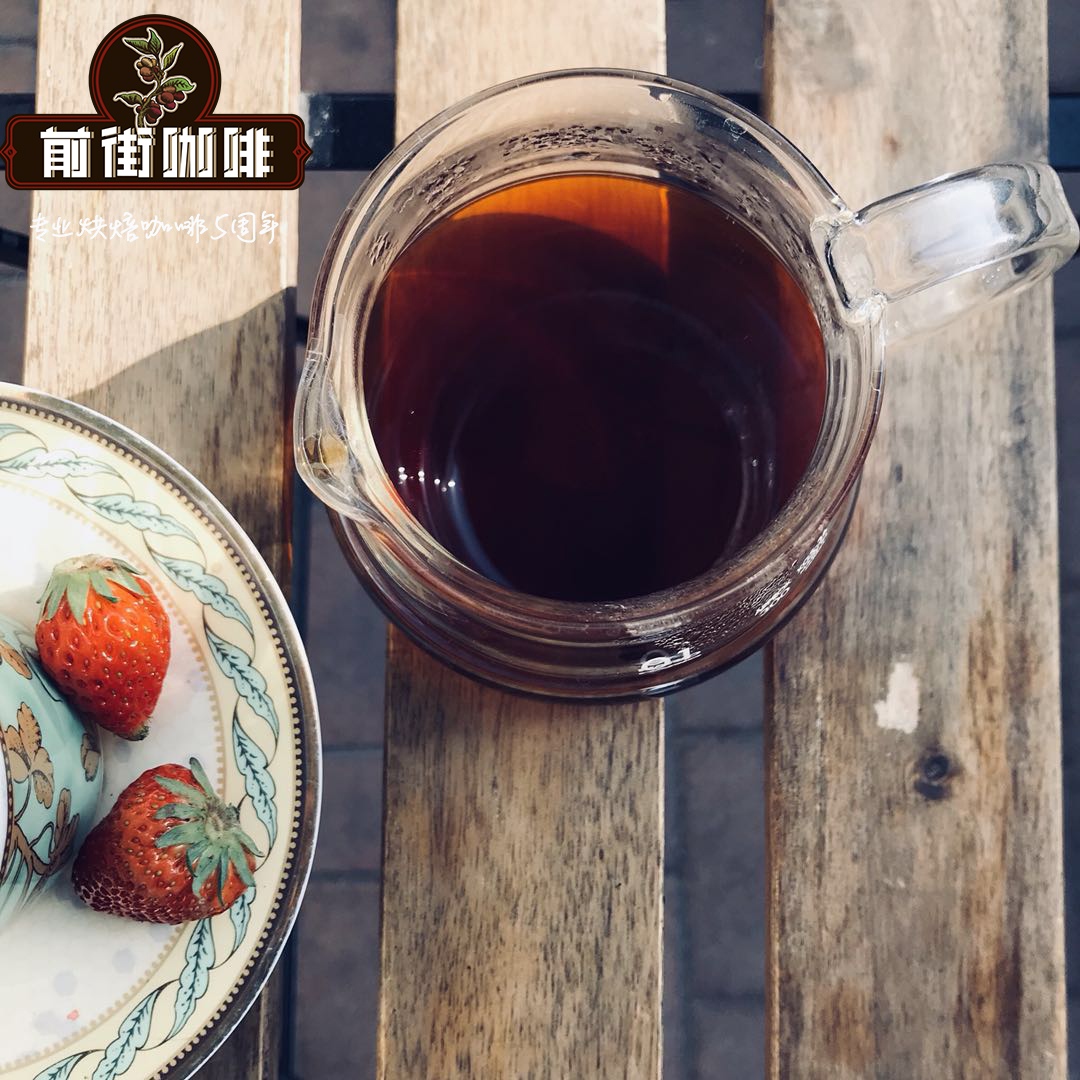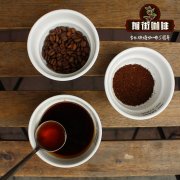Key points of steaming and water injection when making coffee by hand what should we pay attention to when making coffee by hand?

Professional coffee knowledge exchange more coffee bean information please follow the coffee workshop (Wechat official account cafe_style)
What is steaming in hand-brewed coffee? Why are you steaming? The microstructure of coffee powder is actually similar to that of a honeycomb, with numerous penetrating holes in which coffee beans continue to emit carbon dioxide and volatile aromatic substances that are initially stored in these holes. When I inject hot water, the coffee powder absorbs water and squeezes out the carbon dioxide inside, and the gas is discharged along the hole. Hot water continues to activate coffee activity, making the subsequent coffee extraction process more smooth. Some stuffy steams with obvious steaming effect and large exhaust capacity will make the coffee method bulge in the shape of [hamburger].
The details of steaming
Water column
When making coffee by hand, gravity is used to inject a penetrating water column, which is vertical, thick and thin, steaming and injecting water continuously; the water column has a certain height from the powder layer, circle as far as possible, and return to the center from the inside to the outside and from the outside to the inside. There is also a saying of "laying water". When injecting water, it is too gentle to let the water penetrate the surface powder layer, but moistens the surface, so that the water can only rely on capillarity and gravity to infiltrate into the deep layer. At this time, the time for steaming water to seep into the bottom layer will be extended, and part of the water will spread from the surface and flow away from the ribs on the edge, thus reducing the amount of water actually steamed by coffee powder, and the effect of steaming will naturally be greatly reduced.
Water quantity
Usually we take the proportion of hand-brewed coffee, the amount of water is about 1.5-2 times the weight of the powder, maintain a uniform amount of water, generally just can completely soak the coffee powder, for example, we use 15g powder, will pour 20-30g of water, try not to touch the edge of the filter cup, water is an inert liquid, if there is too much water, it will slip away from the ribs of the filter cup, and part of the powder layer does not participate in steaming, which will increase the risk of inadequate extraction.
time
The steaming time of hand coffee is about 20 seconds after water injection, which is related to the degree of freshness and baking. The fresher the beans, the longer the steaming time, the deeper the beans exhaust (hamburger state is obvious, there are many bubbles, the surface is smooth, slightly reflective), so the steaming time is relatively long, usually we will look at the surface state of the powder layer, when there are rough particles, it means that the powder absorbs water and enters the full state. We can proceed to the next stage of water injection.
The first stage water injection flow
Hand coffee water injection is gentle and penetrating, showing a sharp state, slowly circling from the middle to the outside, 1cm from the edge of the filter cup and then back to the center. At this time, water injection will produce foam, and the thickness of the foam represents the air content in the coffee powder, which also determines whether the coffee powder floats on the water surface or precipitates at the bottom of the filter. There is a lot of air, and the coffee powder floats on the water surface, so it is necessary to use a gentle flow of water to disturb the coffee powder and let the air out of the coffee powder. The water spreads rapidly from inside to outside, and the taste of the front and middle parts will be extracted. If the current is too big and too strong, it will flow directly into the filter at the bottom to dilute the taste of coffee; if there is too much air, that is, the foam is very large, it is also necessary to suspend the water injection to let the air out a little more, and then inject water.
Usually flush 15g powder, we will pour 120-125g water off to observe the rate of decline of the water level, if the drop is relatively slow, it means that the fine powder at the bottom of the filter cup has blocked the drainage, and the second stage of water injection will begin when it falls to 1amp 3-1 / 2.
Second stage water injection flow
The water level in this section is higher than that in the first section, and it is necessary to increase the amount of water injection and circle speed at the beginning. Why? At this time, sour and sweet substances are almost fully extracted, followed by some macromolecular substances (such as nuts, dark chocolate, cocoa, pine, etc.). Too much dissolution will produce bitterness, astringency, rough taste, etc. However, when the current is too large, the power of mixing the powder particles becomes stronger, and the powder particles that rotate too fast may not necessarily be dissolved. Without the barrier of the powder layer, the water is discharged directly down, which may cause the hand-brewed coffee to be tasteless. Therefore, to increase the amount of water to how much, there is no clear figure, to rely on their own continuous cooking and recording, remember the feel.
The height of the water column
Ordinary hand-brewed coffee is brewed in three stages, and is the height of each column of water the same? Not necessarily, in our experience, when steaming, the height of steaming should be kept around the 5cm of the powder layer. We should not only maintain a penetrating water column, but also make the powder particles at the bottom absorb enough water, and the powder particles on the surface should be discharged smoothly.
When the first stage of water injection is close to the outer ring, the water column can be lowered and the powder particles at the edge can be stirred as little as possible, otherwise the water will pass through the ribs and dilute the concentration to make the taste lighter. At the same time, we should also pay attention to the state of air bubbles. If there are many bubbles, it is proved that the powder particles stay on the surface and need to be washed down evenly. At this time, the bubbles will slowly whiten, so that the powder particles will be completely soaked in the water to dissolve the substance. During the second stage of water injection, winding to the central powder layer can raise the water column, stir the fine powder at the bottom, and reduce blockage and bad smell. Sometimes, if you want to extract more sweetness, you will pull up the water column in the late stage of the first stage of water injection to accelerate the mid-stage extraction, and the taste will be stronger with the same total amount of water injection. But this method is not suitable for all baked beans.
[medium light-medium baked] beans
For example, in the case of the first stage of water injection and keeping the height of the water column, the sweetness of the middle section tends to nectarines and blueberries, while when the Cedamo candle Mang increases the height of the water column, the sucrose sweetness will be more prominent. the end is slightly jackfruit.
[medium and deep baked] beans
If hand-brewed coffee [Jamaica Blue Mountain] needs to be injected close to the surface of the powder layer, whether it is steaming or the first stage of water injection, the medium and deep baked beans will absorb water and expand quickly, exhaust more, the gap between the powder particles will become larger, and the higher water injection height will allow the water to pass through the powder layer faster, without too much participation in the extraction. For deep-baked beans, we will choose the Kono cup, which takes longer to extract. Although the ratio of water to powder at 1:14 is often used, the lower powder will taste bitter after soaking for a long time, so the height of the water column can be increased during the second stage of water injection. it's also to reduce blockage.
Practice water injection
With such a mysterious problem of water injection, it is useless to talk about it, and we still need more practice. Set a time to inject water, for example, you can set the time to one minute and finish 150g of water. Similar to this, using this method to practice the feel, you can also more intuitively know how to control the thickness of the water flow when making coffee by hand.
Another important factor in hand stability is the strength of your wrists and arms! At the beginning, you can practice punching the pot with a small hand, and at the same time, you should also enhance the strength of the wrist and arm. In the future, if you change a large capacity of the hand to make the pot, you will not shake your hand. If the weight and stable water injection are not difficult for you, you can practice holding the pot with both hands, which is about to work on the left and right side of the brain.
Steaming and water injection are also one of the factors that affect the extraction. When you have a thorough understanding of the extraction, you can directly adjust the water flow size and water injection height by looking at the state of the powder layer. Of course, it is also necessary to record the data. If you say so much, how can you do without practice? let's practice water flow!
Related recommendation: is hand-made coffee really good? Why does coffee smell better than it tastes?
Important Notice :
前街咖啡 FrontStreet Coffee has moved to new addredd:
FrontStreet Coffee Address: 315,Donghua East Road,GuangZhou
Tel:020 38364473
- Prev

Learn to make coffee questions and answer questions for beginners in hand brewing coffee
Professional coffee knowledge exchange more coffee bean information please follow the coffee workshop (Wechat official account cafe_style) Hello everyone, friends will buy coffee utensils and coffee beans home to make their own coffee, editors often receive a variety of hand-brewing coffee problems, friends' enthusiasm for discussion is also very high. So today, the editor is going to share with you some common things that are common to newcomers.
- Next

Hand-brewed coffee powder thickness picture Mantenin boutique coffee why is it not bitter?
Professional coffee knowledge exchange more information about coffee beans Please pay attention to how fine coffee beans should be ground in the coffee workshop (Wechat official account cafe_style). The roughness of grinding not only affects the extraction rate of these substances, but also greatly affects the flavor of coffee. So, what is the thickness of the coffee powder of hand-brewed coffee? Grinding
Related
- Beginners will see the "Coffee pull flower" guide!
- What is the difference between ice blog purified milk and ordinary milk coffee?
- Why is the Philippines the largest producer of crops in Liberia?
- For coffee extraction, should the fine powder be retained?
- How does extracted espresso fill pressed powder? How much strength does it take to press the powder?
- How to make jasmine cold extract coffee? Is the jasmine + latte good?
- Will this little toy really make the coffee taste better? How does Lily Drip affect coffee extraction?
- Will the action of slapping the filter cup also affect coffee extraction?
- What's the difference between powder-to-water ratio and powder-to-liquid ratio?
- What is the Ethiopian local species? What does it have to do with Heirloom native species?

